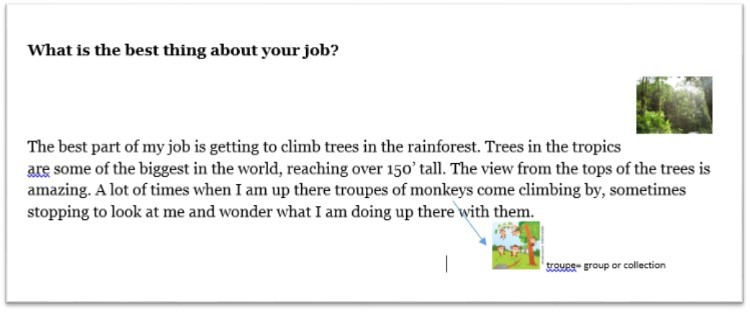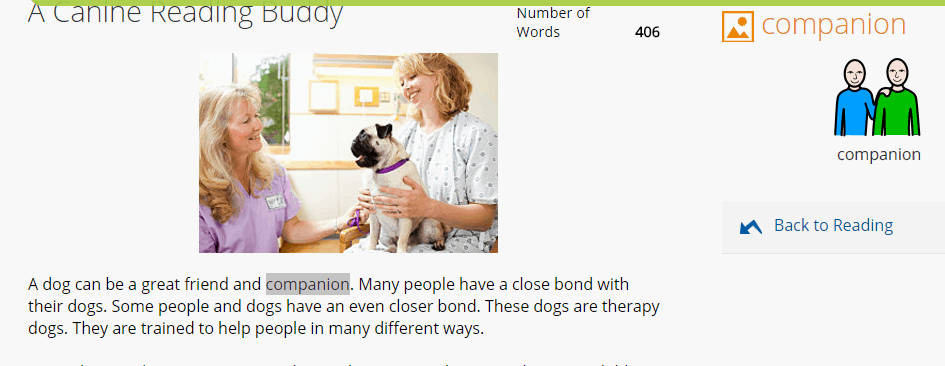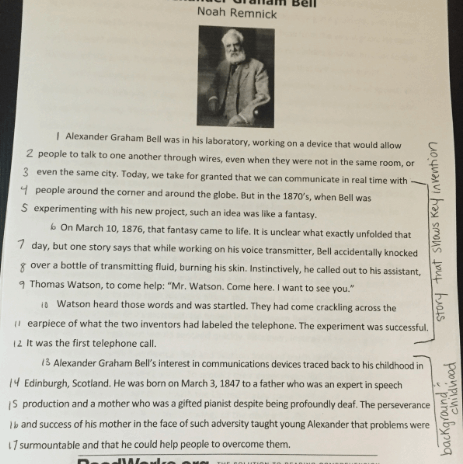Does this sound familiar? You design an exciting lesson to tackle rich and engaging complex texts with your students, then a voice in your head stops you in your tracks. The voice asks “but what about ____________?”
You can fill in the blank with any of your struggling students. Perhaps it’s a 6th grader reading at a 3rd grade level, who refuses to read aloud the texts in the sixth grade curriculum due to her frustrations with her reading fluency. Perhaps it’s a group of English Language Learners without the vocabulary exposure and knowledge needed to make sense of the topic-specific unit you are about to launch. Or perhaps it’s three of your IEP students who were traditionally pulled out of whole class instruction for leveled reading work during your full-class reading instruction.
The temptation may be to dismiss this nagging voice that is getting you down: to tell it to be quiet and accuse it of having low expectations; to push forward and just hand the passage out or to hand out an easier text. Don’t! Putting texts that are too hard in front of students with individualized needs, with no scaffolds or supports, will not miraculously make these students great readers. Instead, consider how support might enable them to engage more fully with a new rich text. What actions might make the text more accessible? Below is a partial list of adaptable scaffolding ideas to support all students:
Support Vocabulary:
Provide student-friendly glossaries and/or re-format the text to include visual cues for key academic vocabulary that may prevent students from understanding what they are reading. This can be done as a full-class support for students, but also on a more individualized level for students for whom vocabulary deficits may be the missing piece of the puzzle. Picture cues can also be used to support text-dependent questions students are answering during subsequent re-reads.
 This example shows how you can reformat the text to include visual cues. The text is from Expeditionary Learning Grade 5, Module 2A, Unit 1, Lesson 2: “Interview with Sloth Canopy Researcher: Bryson Voirin.” Images added subsequently as a scaffold.
This example shows how you can reformat the text to include visual cues. The text is from Expeditionary Learning Grade 5, Module 2A, Unit 1, Lesson 2: “Interview with Sloth Canopy Researcher: Bryson Voirin.” Images added subsequently as a scaffold.
 Google’s “Fluency Tutor” has a picture dictionary feature that allows students to select words to provide picture cues. Here, students can actually highlight the words and access the picture dictionary.
Google’s “Fluency Tutor” has a picture dictionary feature that allows students to select words to provide picture cues. Here, students can actually highlight the words and access the picture dictionary.
Use Deliberate Annotation:
Number the lines of the text whenever possible to help students navigate the text when searching for evidence. Consider when to pre-annotate texts with a defined purpose for reading. Pre-annotating is especially helpful in blended texts when two or more genres are combined. While reading, support students in annotating for key ideas, which may involve providing structured overviews. After reading once for meaning, chunk the text into sections when re-reading and allow time for students to annotate the sections or discuss with their peers.
 In this example, the teacher has numbered the lines of the text to help students navigate. This example also shows annotations that help call out key ideas in the text. Text is from ReadWorks.org; line numbers and annotations added subsequently as a scaffold.
In this example, the teacher has numbered the lines of the text to help students navigate. This example also shows annotations that help call out key ideas in the text. Text is from ReadWorks.org; line numbers and annotations added subsequently as a scaffold.
Use Questions as Planned Scaffolds:
A strong series of questions supports all students and focuses reading comprehension for higher-needs students. Pre-plan questions systematically, so that they build from basic comprehension to a more abstract or inferential interpretation. Providing “hint cards” to direct students to specific portions of the text to answer questions can help them learn to use the text and re-read for meaning. Building questions that use paragraph or line numbers, section headings, and other cues to support use of the text in the wording of the question itself can further support this work.
 Example of how a question can support students by directing them to the part of the text to re-read.
Example of how a question can support students by directing them to the part of the text to re-read.
Allow Time for Reflection and Discussion:
Balance the group discussion time by giving students time to write quietly to prepare for oral discussion or provide time to talk things out with their peers to prepare for writing. Ensure that all students are participating by providing time for partners or small groups to talk and write together.
Want more ideas? Strategies for Supporting Struggling Readers (attached) includes the suggestions above and more concrete teacher moves that can support all learners in your classroom.

















Thanks for this great strategy reference to support students comprehension who are reading at multiple reading levels. I share many of these same strategies in the graduate level class that I teach for a Master’s program. I also double space between lines of text and bold important vocabulary. I will share your article in my class. Thanks for a great reference.
I have returned to this piece again and again when working with teachers. Thanks!
That’s so great to hear, Casey. Thanks for taking the time to share it with us. Glad the strategies are proving helpful!
These strategies provide some support for comprehension and vocabulary. But do nothing for the many students who still struggle with decoding and fluency. None of these strategies will address these foundational gaps. You need to be clear that explicit instruction using a structured phonetics and morphology program is needed for those students who still struggle to actually read is necessary. These students will not learn to read “along the way” by being give. A few accommodations. They need actual instruction that addresses their core learning deficits.
Foundational Skills are critically important. While this post is focused on scaffolding strategies, Aligned has many articles about Foundational Skills. Check out this series: https://achievethecore.org/aligned/series/?series=Foundational%20Literacy%20Skills
It is important that all students reach the same content. As we speak about ELA the students have an ample diversity of different skills develop at their grade level The reader does not develop at the same time. That is why we teachers need to understand that for the students to reach the same content our expectation should be the same. Not because they have an IEP or they are EL we should lower our expectation. In the article by Carol Swanson she states that we need to use as much support needed to reach each student it doesn’t matter the level of the student. I agree with her , it is important to scaffold specially the vocabulary. We need to use questioning and note taking be able to reach all student .
Using the annotation strategy is a take away that I plan to use with EL population. The scaffolding of key ideas is useful when doing close reading in small groups. I would also implement the use of a highlighter with vocabulary words for further comprehension. Of course this article could be used for a few days and focusing on different learning areas.
I am looking for something to help my struggling readers.
We need to make sure we are providing decoding and fluency and vocabulary strategies. We need explicit instruction. I do this in Guided Reading Groups, but also help students in a smaller group when we are doing task work while I monitor other students also.
I like the annotation strategy. I believe this strategy will be most beneficial for our students.
I use the close method to sees whos focused and understanding,
I use the close method to sees whos focused and understanding,
I provide background knowledge
students need background knowledge first
Scaffolding reading has three steps
I like to have students number the lines in a passage